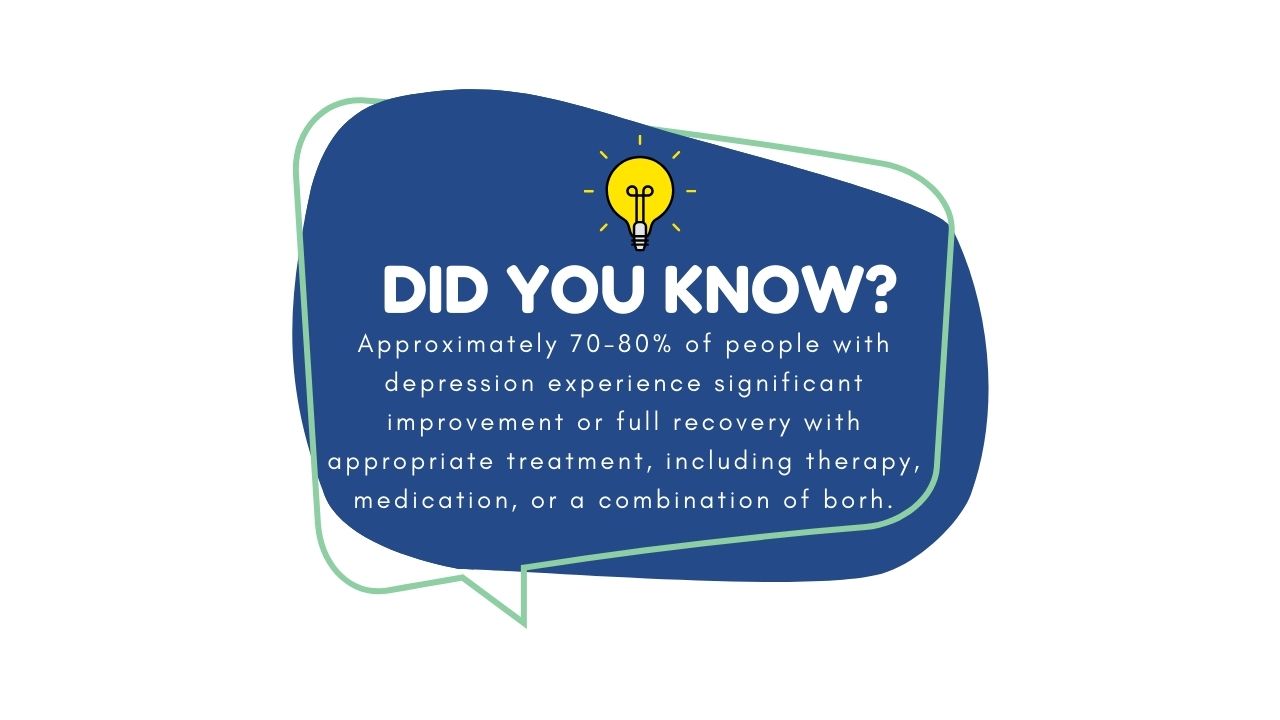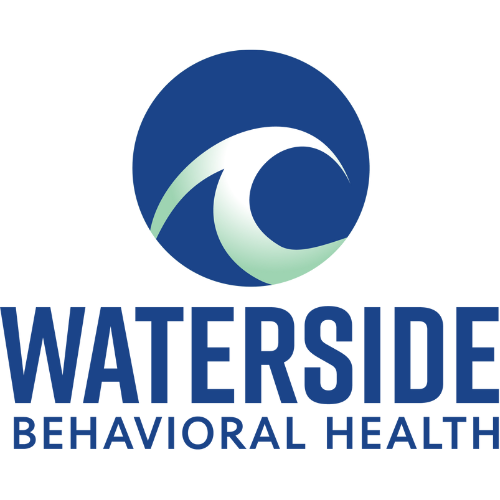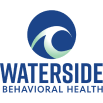Can Depression Go Away: Understanding Recovery and Effective Treatment Options
Depression is a common mental health condition that affects millions of people worldwide. Many wonder if this challenging condition can truly go away or if it’s something they’ll have to manage forever.
Yes, depression can go away completely for many people with proper treatment and support. Research shows that approximately 40-60% of people who receive treatment for depression experience full remission of their symptoms. For others, depression may become more manageable even if some symptoms persist.
Recovery looks different for each person. Some may find relief through therapy, medication, lifestyle changes, or a combination of approaches. The timeline varies too – some might feel better in weeks, while others may need months or longer to heal. What matters most is seeking help and finding the right treatment plan.
Understanding Depression
Depression is a complex mental health condition that affects how people feel, think, and handle daily activities. It goes beyond temporary sadness and can significantly impact a person’s quality of life when left untreated.
Definition and Symptoms
Depression is a mental health disorder characterized by persistent feelings of sadness and a loss of interest in activities once enjoyed. To be diagnosed with clinical depression, symptoms must last for at least two weeks and represent a change from previous functioning.
Common symptoms include:
- Emotional signs: Sadness, emptiness, hopelessness, irritability
- Physical signs: Sleep disturbances, fatigue, appetite changes, physical aches
- Cognitive signs: Difficulty concentrating, negative thoughts, suicidal thoughts
- Behavioral signs: Social withdrawal, reduced productivity, loss of interest
These symptoms vary in intensity. Some people may experience a few symptoms mildly, while others might face many symptoms severely, making daily functioning difficult.
Types of Depression
Depression manifests in several forms, each with distinct patterns.
Major Depressive Disorder involves severe symptoms that interfere with daily functioning for at least two weeks.
Persistent Depressive Disorder (dysthymia) is a long-term form lasting for at least two years, with symptoms that may be less severe but more chronic.
Seasonal Affective Disorder occurs during specific seasons, most commonly winter months with reduced sunlight.
Postpartum Depression affects some women after childbirth, causing extreme sadness and difficulty caring for themselves or their baby.
Bipolar Disorder includes episodes of depression alternating with periods of elevated mood (mania).
Causes and Risk Factors
Depression rarely has a single cause. Instead, it typically results from a combination of factors.
Biological factors include brain chemistry imbalances, hormonal changes, and genetic predisposition. Having a first-degree relative with depression increases one’s risk.
Psychological factors involve personality traits like low self-esteem and negative thinking patterns. Trauma, major life changes, and chronic stress can trigger depressive episodes.
Environmental factors such as exposure to violence, neglect, poverty, or social isolation contribute to depression risk.
Medical conditions like chronic pain, cancer, and heart disease can trigger or worsen depression. Certain medications may also have depression as a side effect.

Treatment and Management
Depression is treatable through various approaches that target different aspects of the condition. Treatment plans typically combine professional help, medication when needed, and personal lifestyle changes to create the most effective recovery strategy.
Therapy Options
Professional therapy provides essential support for people with depression. Cognitive-behavioral therapy (CBT) helps identify negative thought patterns and develop healthier thinking habits. This approach has shown success rates of 50-75% for moderate depression.
Interpersonal therapy focuses on improving relationships and communication skills. It’s particularly effective for depression triggered by social challenges or major life transitions.
Other helpful options include:
- Psychodynamic therapy
- Group therapy
- Family therapy
- EMDR (for trauma-related depression)
Most people see improvement within 12-16 weeks of regular therapy sessions. The therapeutic relationship between client and therapist is crucial for success, so finding the right match matters.
Medications
Antidepressant medications can help correct chemical imbalances in the brain. Selective serotonin reuptake inhibitors (SSRIs) like fluoxetine and sertraline are commonly prescribed first due to their effectiveness and fewer side effects.
Other medication options include:
- SNRIs (duloxetine, venlafaxine)
- Bupropion
- Tricyclic antidepressants
- MAOIs (typically used when other medications don’t work)
Medications typically take 2-6 weeks to show full benefits. About 40-60% of people respond to the first medication they try. Others may need to try different medications or combinations.
Important note: Never stop taking antidepressants suddenly without medical supervision. Gradual tapering is necessary to avoid withdrawal symptoms.
Lifestyle Adjustments and Self-Care
Daily habits significantly impact depression recovery. Regular physical activity increases endorphins and can be as effective as medication for mild to moderate depression. Even 30 minutes of walking three times weekly shows benefits.
Nutrition plays a key role. Foods rich in omega-3s, B vitamins, and antioxidants support brain health. Limiting alcohol and caffeine helps stabilize mood.
Sleep hygiene improvements often reduce symptoms. Establishing a regular sleep schedule and creating a relaxing bedtime routine are essential steps.
Stress management techniques include:
- Mindfulness meditation
- Deep breathing exercises
- Progressive muscle relaxation
- Journaling
Social connection is vital. Regular interaction with supportive people reduces isolation and provides emotional support during difficult periods.
Prognosis and Recovery
Depression recovery varies widely among individuals, with some experiencing complete remission while others managing recurring episodes throughout their lives. Time frames for improvement depend on treatment approaches, personal circumstances, and the nature of the depressive disorder.
Potential for Recurrence
Depression often follows a pattern of remission and recurrence. About 50% of people who recover from their first episode will experience another episode in their lifetime. This risk increases with each subsequent episode.
The risk of recurrence is higher in the first few months after recovery. Studies show that without continued treatment, 70-80% of people may experience another depressive episode within 5 years.
Certain factors increase recurrence risk, including:
- Residual symptoms that don’t fully resolve
- Early onset depression (beginning in childhood or adolescence)
- Family history of mood disorders
- Co-existing medical or psychiatric conditions
Treatment persistence significantly improves long-term outcomes. Continuing medication for 6-9 months after symptom improvement reduces relapse risk by about 70%.
Managing Expectations
Recovery from depression typically isn’t linear. Most people experience ups and downs during treatment. Improvement often occurs gradually rather than suddenly.
Early signs of recovery may include:
- Better sleep patterns
- Increased energy levels
- Improved appetite
- More interest in activities
Many people notice physical symptoms improving before mood changes. This pattern is normal and doesn’t indicate treatment failure.
Setting realistic recovery goals helps prevent disappointment. Complete symptom elimination may not be possible for everyone, but significant improvement is achievable for most patients.
Partial recovery is common and valuable. Even reducing symptom severity by 50% can substantially improve quality of life and functioning.
Frequently Asked Questions Related to Can Depression Go Away
Depression management involves several approaches that can lead to significant improvement or complete remission. Many people wonder about treatment options, natural recovery, and ways to track progress.
What treatments are available for long-term depression management?
Depression treatment often combines professional care with self-help strategies. Medication such as antidepressants can help balance brain chemicals that affect mood and emotions.
Psychotherapy, including cognitive-behavioral therapy (CBT) and interpersonal therapy, provides tools to change negative thought patterns and improve relationships.
Some people benefit from newer options like transcranial magnetic stimulation (TMS) or ketamine treatments when traditional approaches aren’t effective.
Is it possible for depression symptoms to resolve without intervention?
Mild depression may sometimes improve without formal treatment. Natural recovery depends on the severity, duration, and underlying causes of the depression.
Spontaneous remission occurs in approximately 20-30% of mild cases within a few months. However, moderate to severe cases typically requires proper intervention.
The risk of symptoms returning remains higher without treatment, even if temporary improvement occurs.
How does one know if their depression is improving?
Improvement signs include better sleep patterns and increased energy levels. Many people notice a renewed interest in previously enjoyed activities.
Negative thoughts become less frequent and intense. Friends and family may observe positive changes in behavior or attitude before the person recognizes improvement themselves.
Tracking mood daily can help identify patterns of improvement, even when progress feels slow or inconsistent.
Are lifestyle changes effective in overcoming depression?
Regular exercise releases endorphins that naturally boost mood. Studies show 30 minutes of moderate activity 3-5 times weekly can significantly reduce depression symptoms.
Nutrition plays a key role, with diets rich in omega-3 fatty acids, complex carbohydrates, and antioxidants supporting brain health.
Consistent sleep schedules, stress management techniques, and limited alcohol consumption all contribute to depression recovery.
What role does therapy play in the recovery from depression?
Therapy provides a safe space to explore feelings and develop coping strategies. A therapist helps identify unhealthy thought patterns that maintain depression.
Different approaches work for different people. CBT focuses on changing negative thinking, while interpersonal therapy addresses relationship issues that contribute to depression.
Group therapy offers valuable peer support and reduces the isolation that often accompanies depression.
Can changes in medication lead to the alleviation of depressive episodes?
Finding the right medication often requires trial and adjustment. It typically takes 2-6 weeks for antidepressants to show full effects, and dosages may need modification.
Some people respond better to certain classes of antidepressants than others based on their unique brain chemistry.
Switching medications under medical supervision can lead to better outcomes when the initial treatment proves ineffective or causes uncomfortable side effects.




